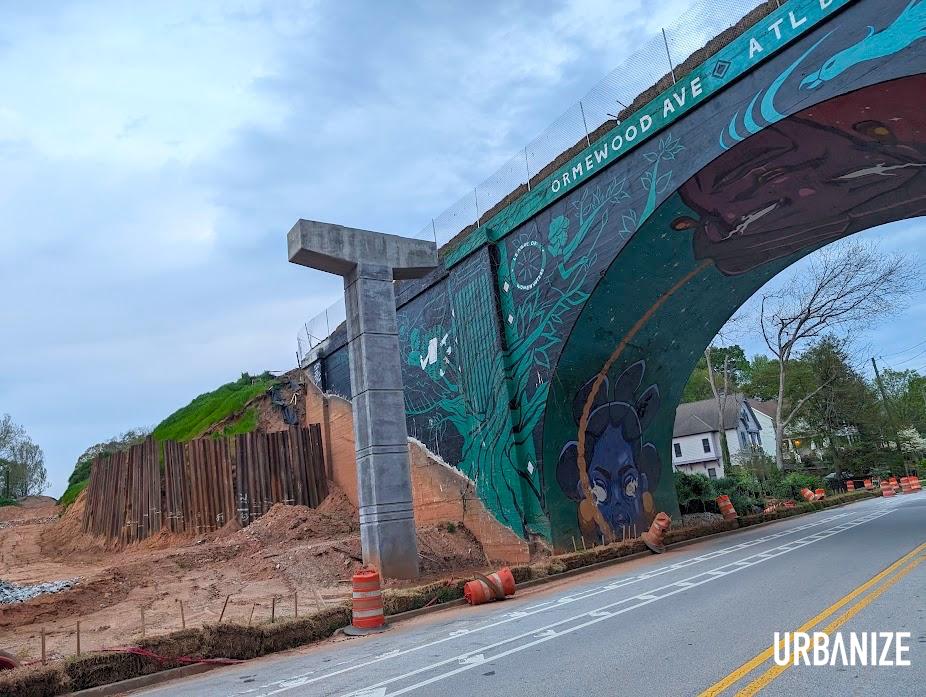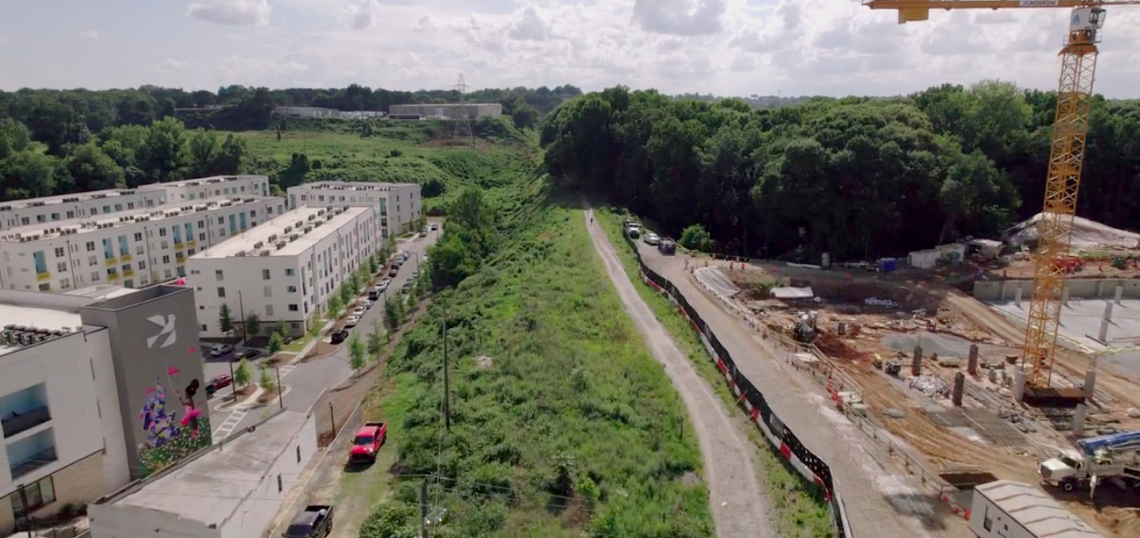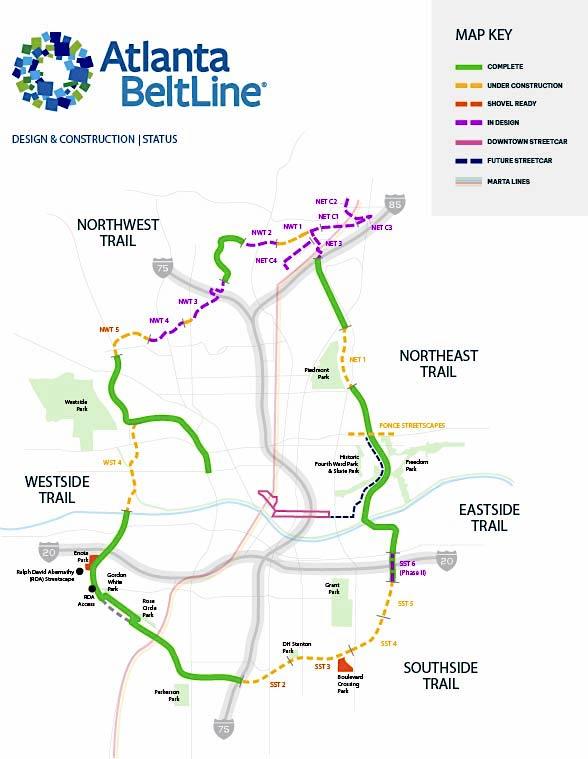The largest budget to date in the nearly two-decade history of Atlanta BeltLine Inc. will fast-track trail construction and allow the agency to more quickly create affordable housing near the 22-mile loop, officials announced today.
Boards of directors for both ABI and Invest Atlanta, the city’s economic development arm, have approved passage of a $172 million budget for fiscal year 2025. BeltLine leaders say that sum includes funding to far surpass a goal of building or retaining 5,600 affordable housing units by 2030, the year all trail construction is scheduled to finish.
That budget—a 12 percent increase over FY 2024’s budget—includes funding to purchase required land parcels for trail completion, mostly for the forthcoming Northwest Trail, a complex leg connecting the Westside to Buckhead. The budget also includes enough cash to exceed the BeltLine’s affordable housing goal by 30 percent, which translates to roughly another 1,700 units. BeltLine officials credited the “mechanisms for funding the BeltLine” with continuing to “successfully deliver the funding needed” for construction costs, land buys, and other objectives, according to the announcement.
Clyde Higgs, BeltLine president and CEO, said the budget news signals “a historic and exciting time” for the project, as it moves “closer to completing the trail while meeting important goals,” per a statement.
 Infrastructure work, at left, for the new sloped entry/exit point on the Southside Trail. Josh Green/Urbanize Atlanta
Infrastructure work, at left, for the new sloped entry/exit point on the Southside Trail. Josh Green/Urbanize Atlanta
According to the BeltLine’s tally, FY 2025 will see 13 active construction projects. The greatest share of the $172 million budget will go toward design and construction (49 percent), followed by real estate (23 percent), and affordable housing (12 percent), per the agency, which provided this breakdown of primary FY 2025 funding sources:
- The BeltLine Tax Allocation District will provide 40 percent of the budget, or $69 million;
- Philanthropic sources will contribute 29 percent, or $49 million;
- The BeltLine Special Service District will provide 18 percent, or $32 million;
- And federal, state, and local agency grants will constitute 11 percent, or $20 million.
Despite rising development costs, BeltLine officials say 488 new affordable housing units are projected to deliver this year (through projects such as the recently opened Stanton Park Apartments in Peoplestown), with another 626 on pace to come online in 2025 (those projects include Ralph David House in Reynoldstown and Englewood Manor in Chosewood Park.)
Almost 1/3 of TAD spending will go toward affordable housing in the new budget, which includes funding for more land acquisition, predevelopment costs, and maintenance and restoration of the current 86 acres the BeltLine has acquired in recent years to build housing. All of that acreage is “actively moving through the development pipeline,” per agency officials.
BeltLine leaders are forecasting that 85 percent of the mainline trail—or 17.5 miles—will be complete by the time 2026 FIFA World Cup fans descend upon the city in two years. That will include more than 16 miles of connected, paved trails stretching from historic neighborhoods such as Blandtown in northeast Atlanta, through the Westside, around the southside to Piedmont Park, and to the southern reaches of Buckhead.
To put that all in perspective, below is the most recent overview of where construction stands across the full 22-mile loop and ancillary projects (with apologies for the grainy map image):
...
Follow us on social media:
Twitter / Facebook/and now: Instagram
• Before/after: Atlanta BeltLine's famous Eastside Trail turns 10 (Urbanize Atlanta)







